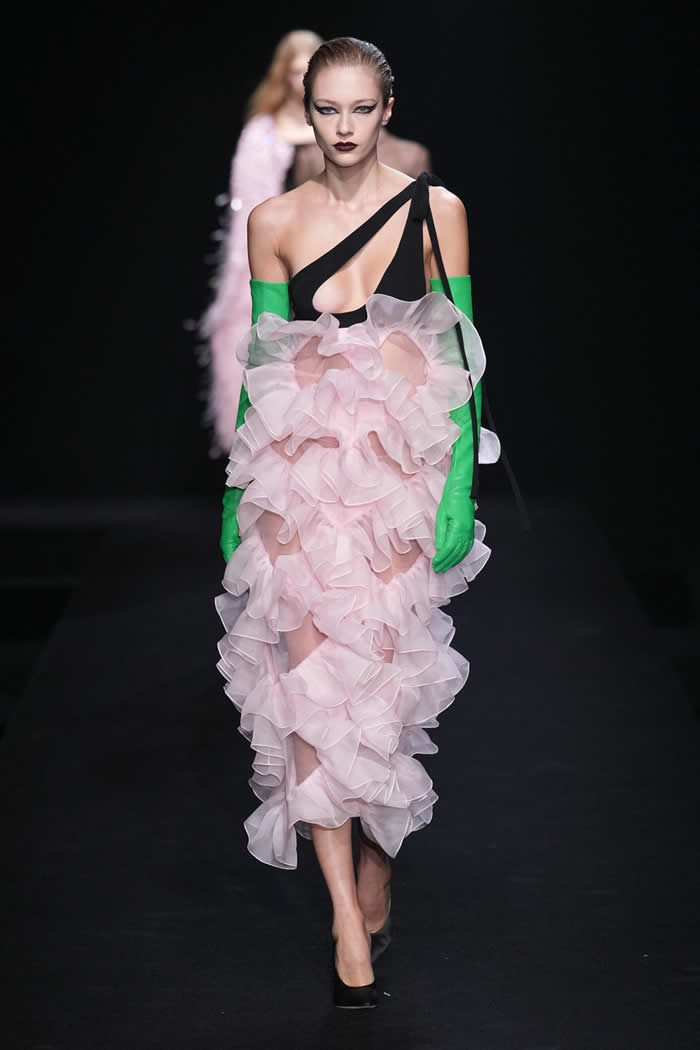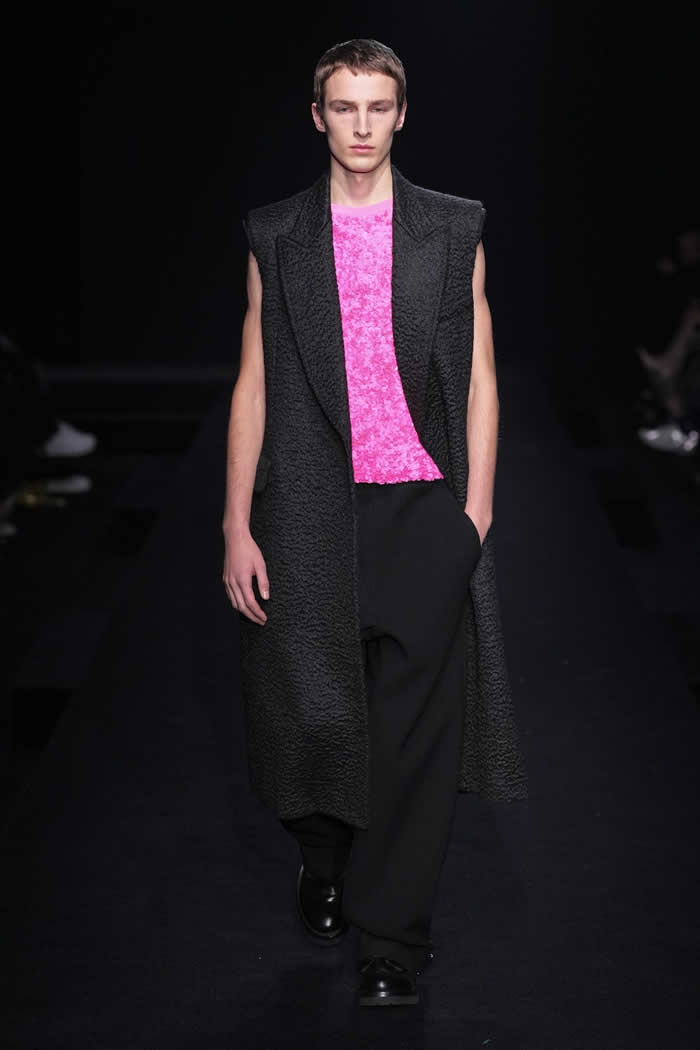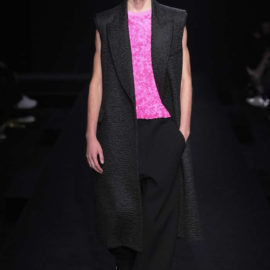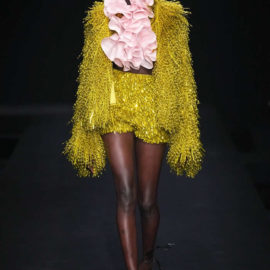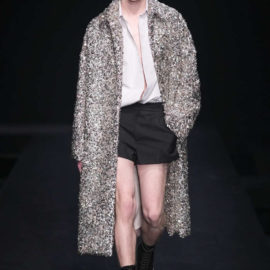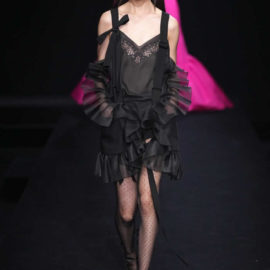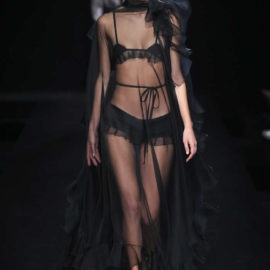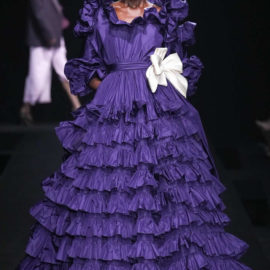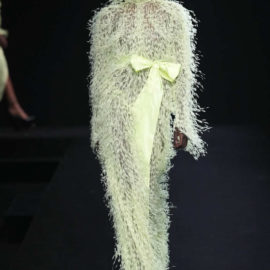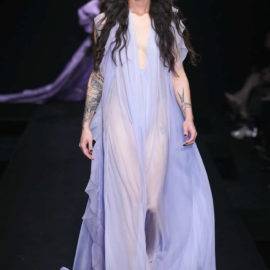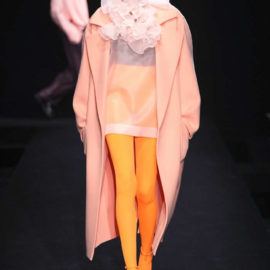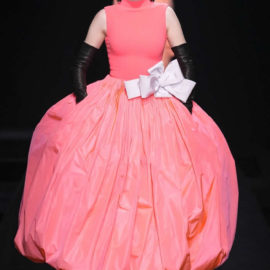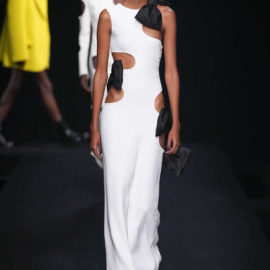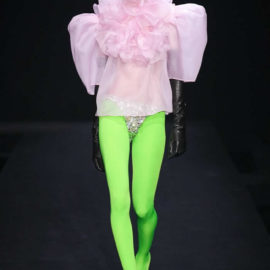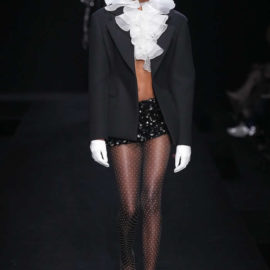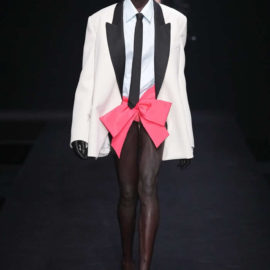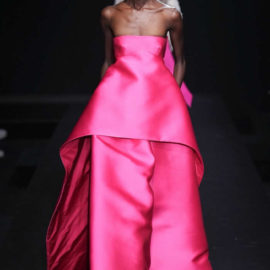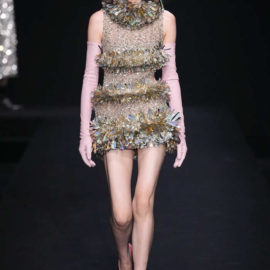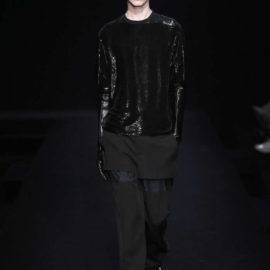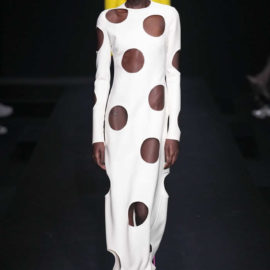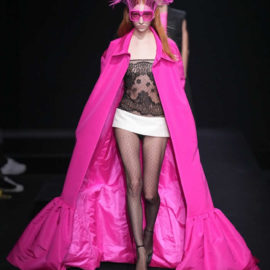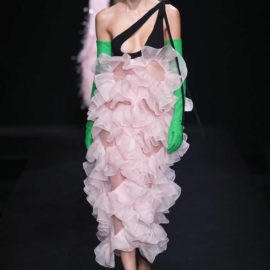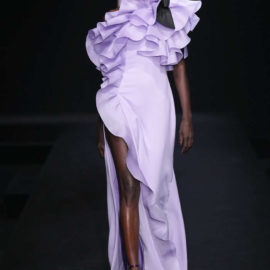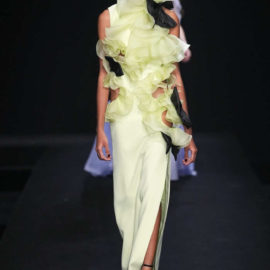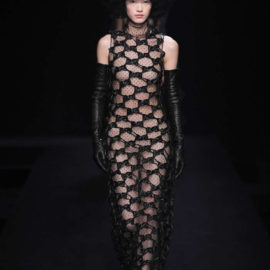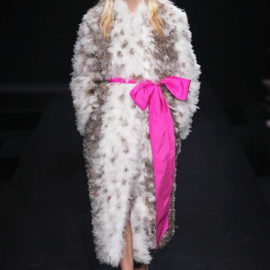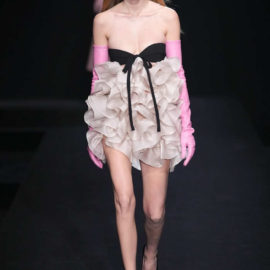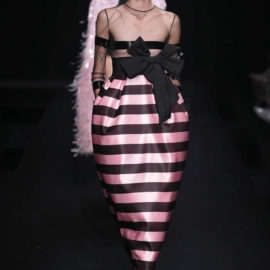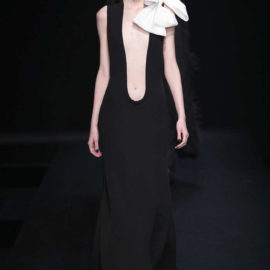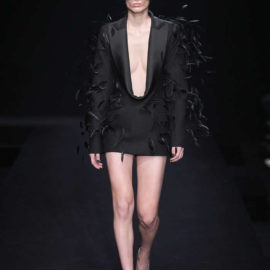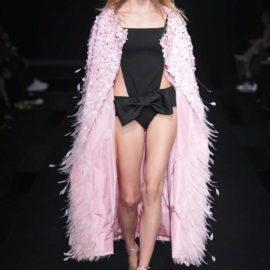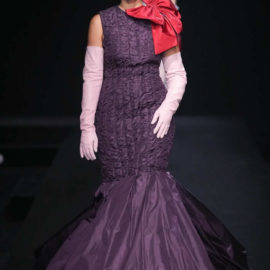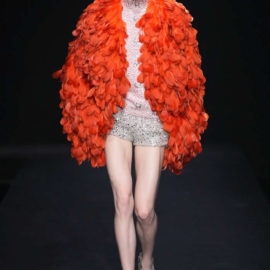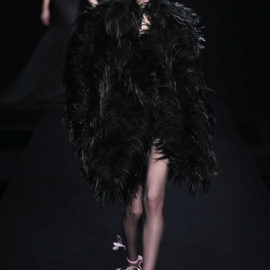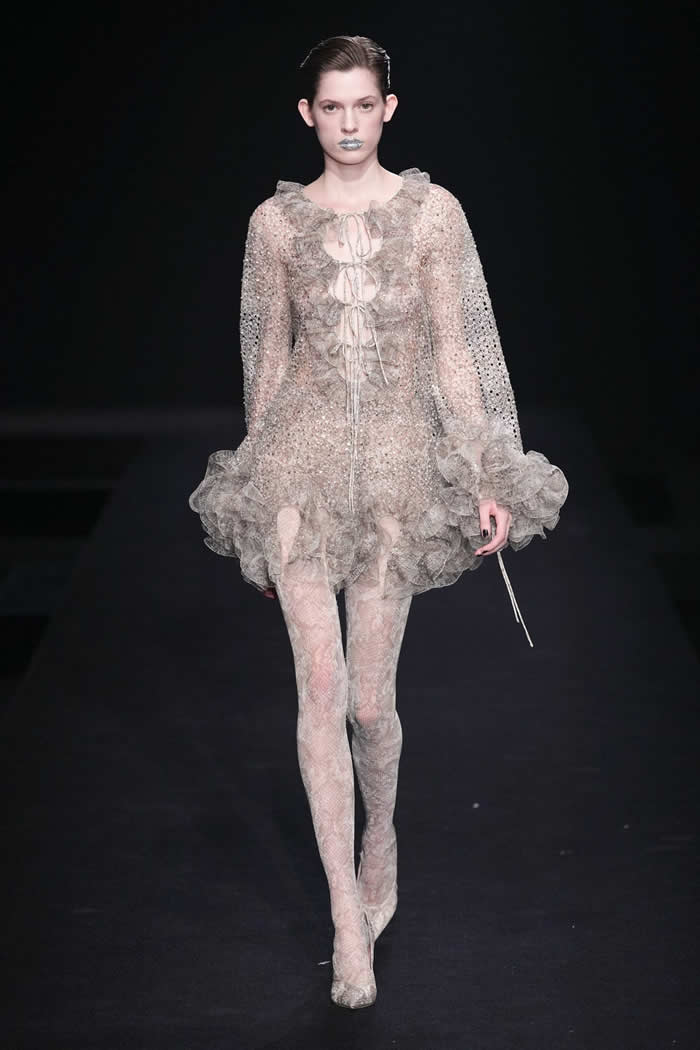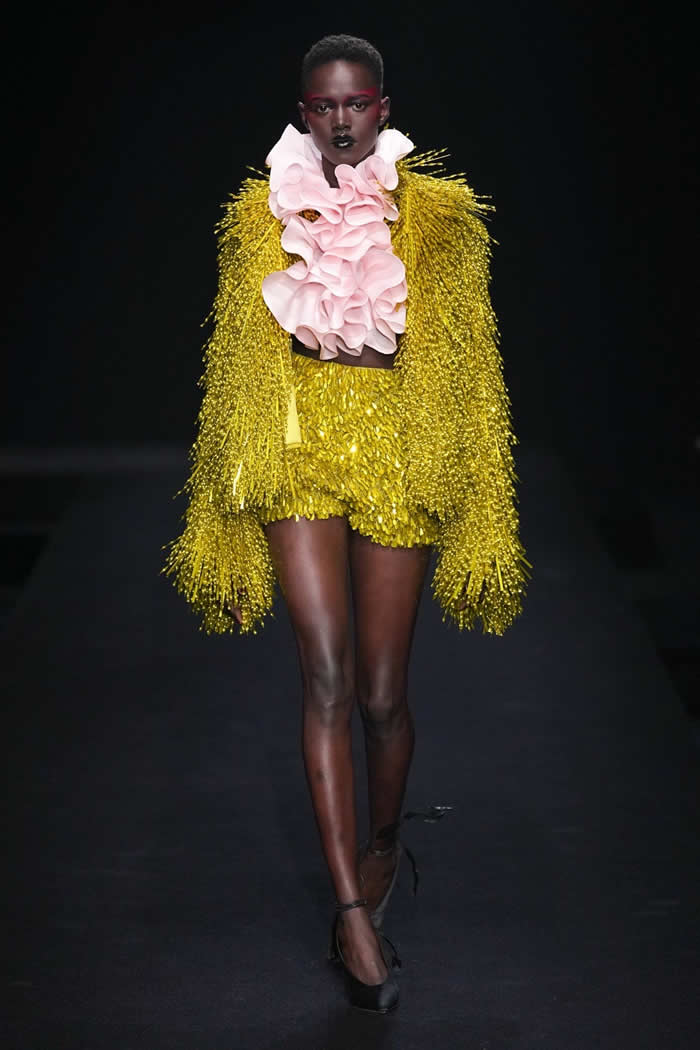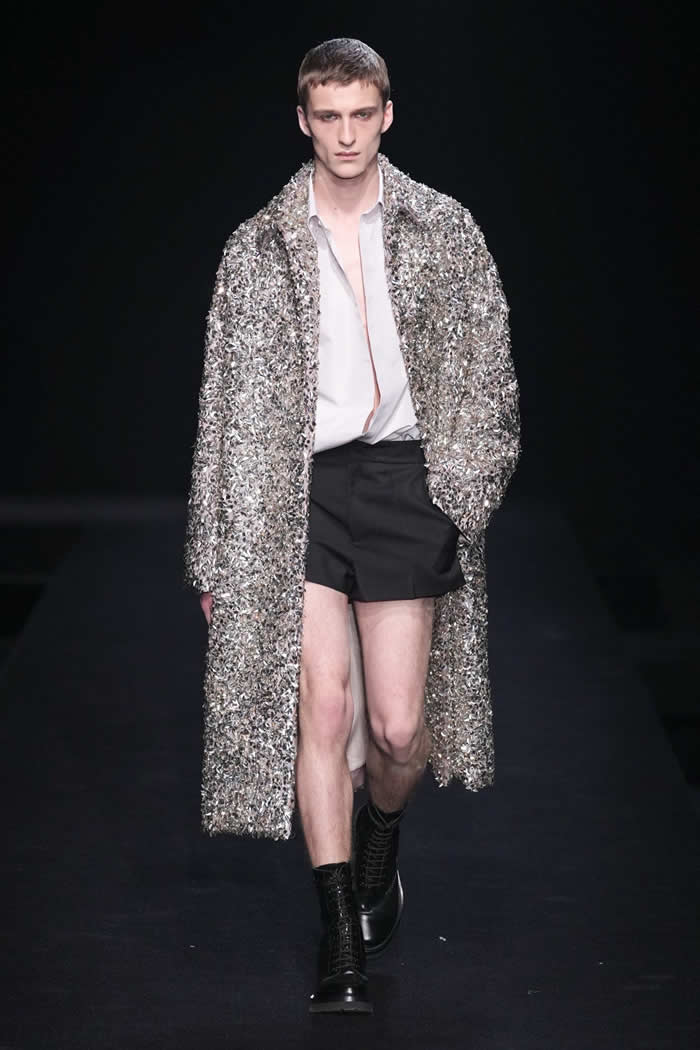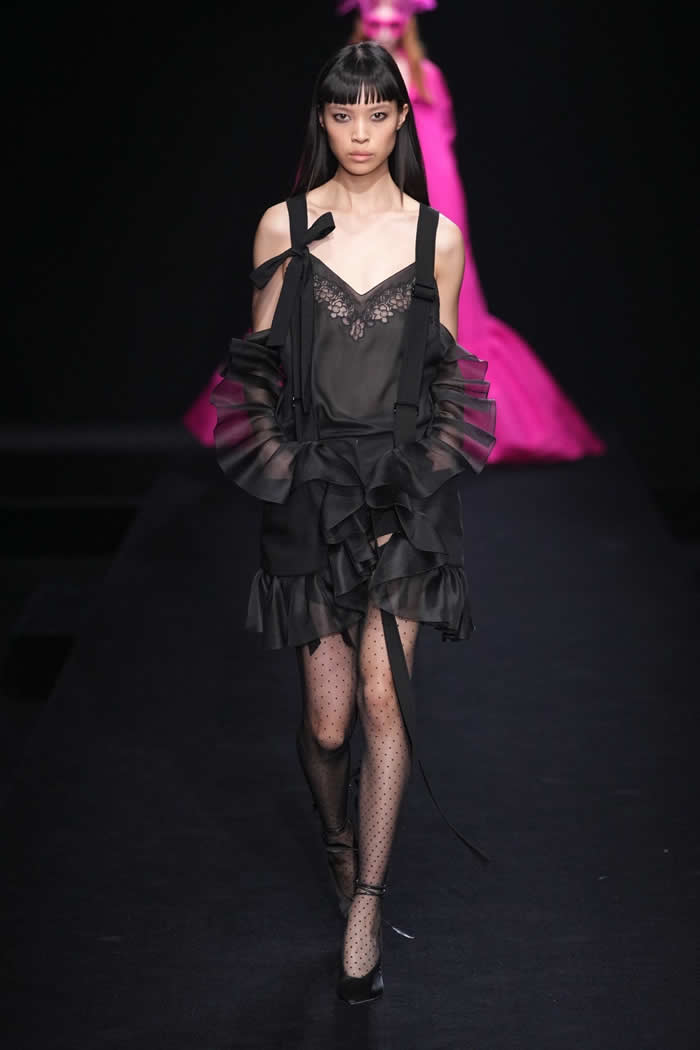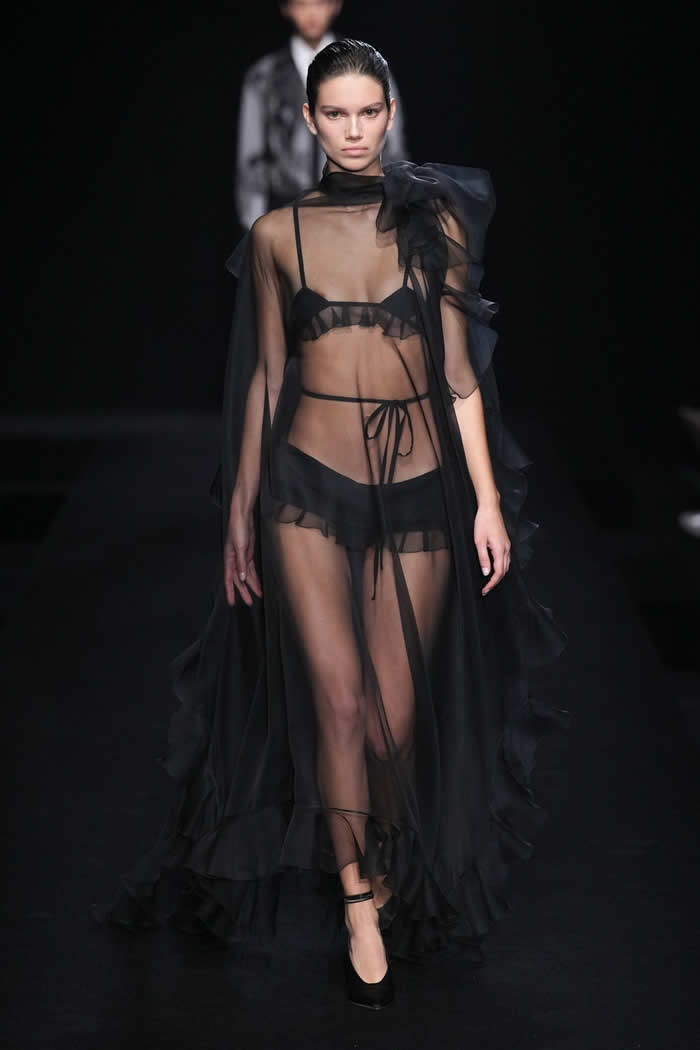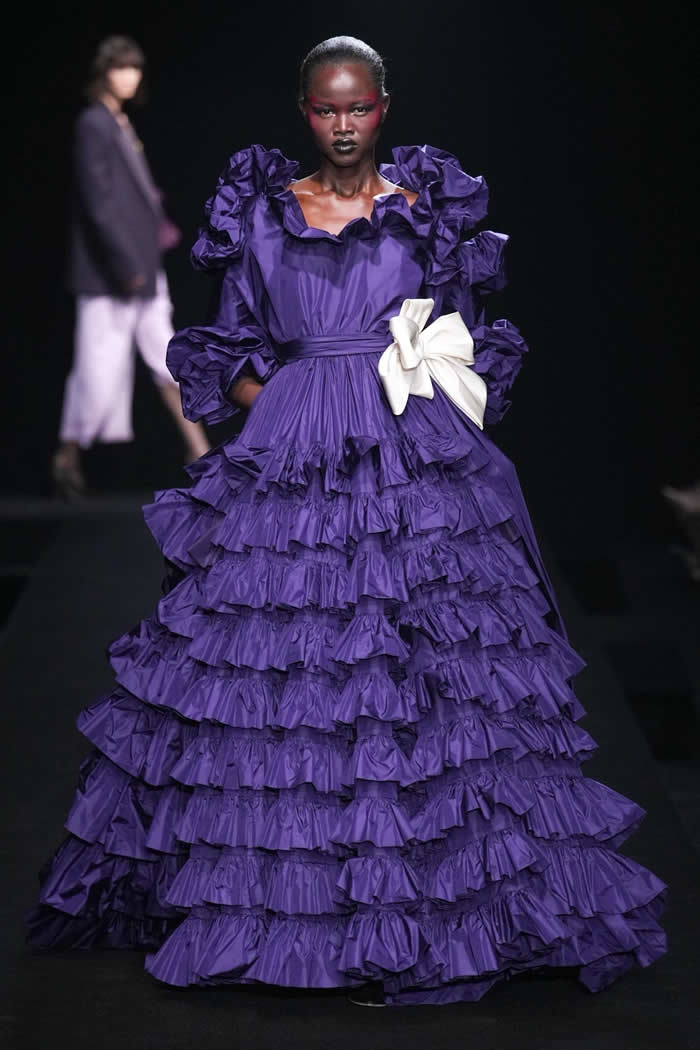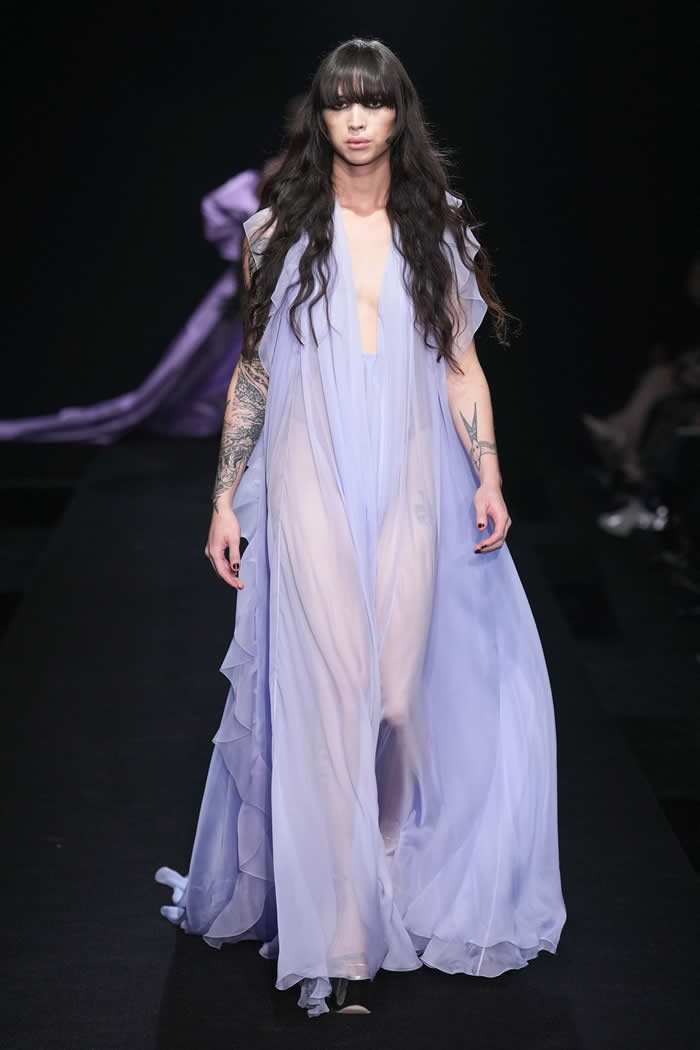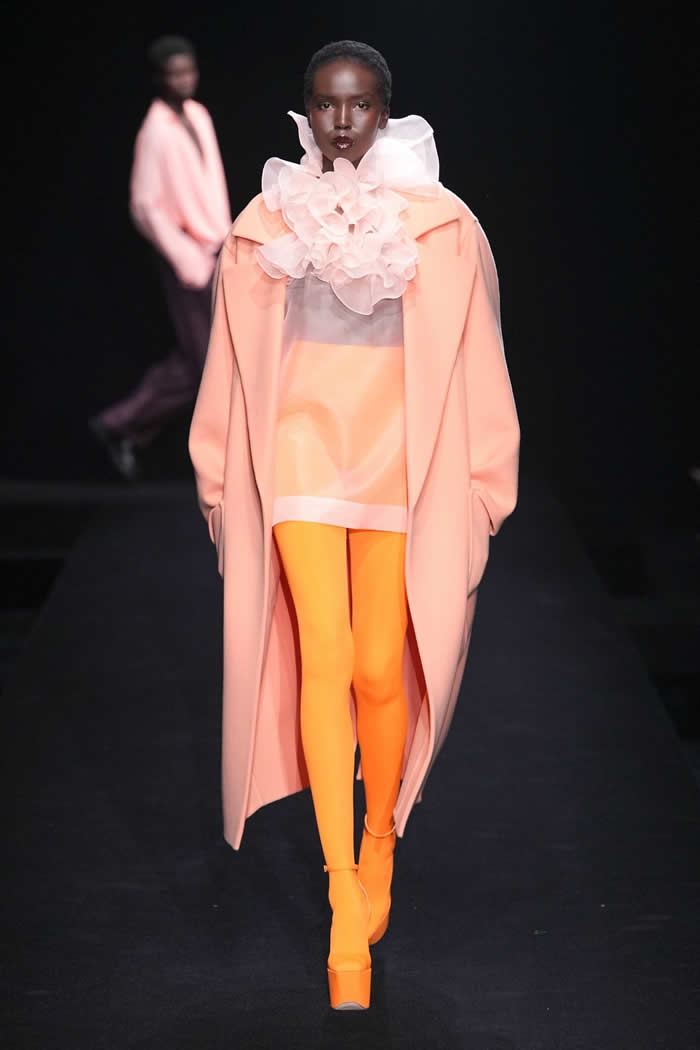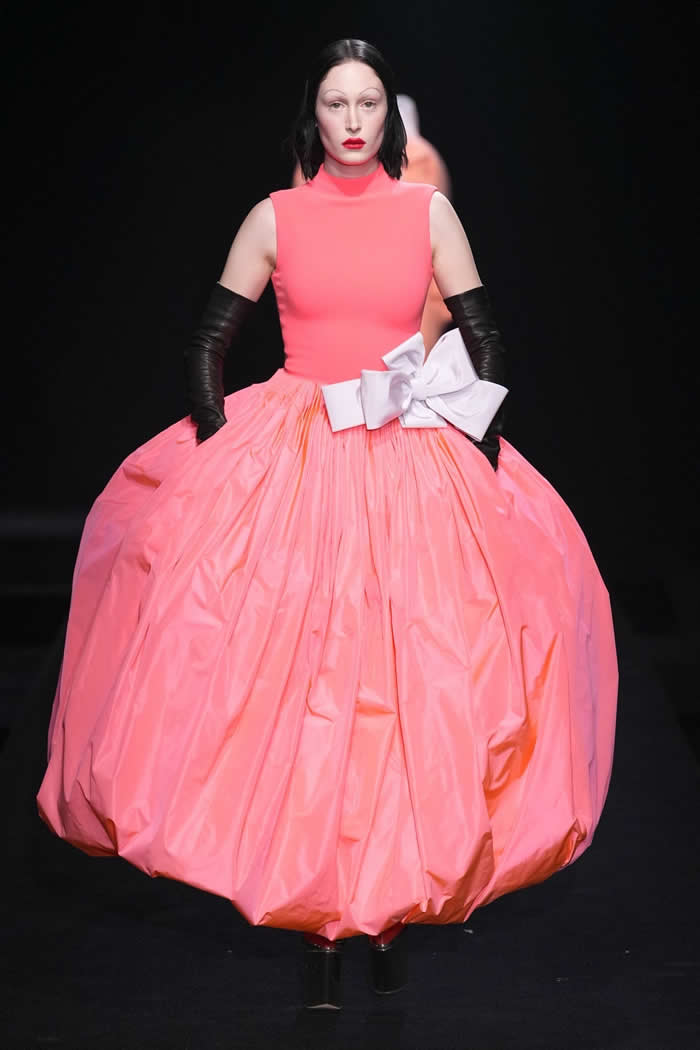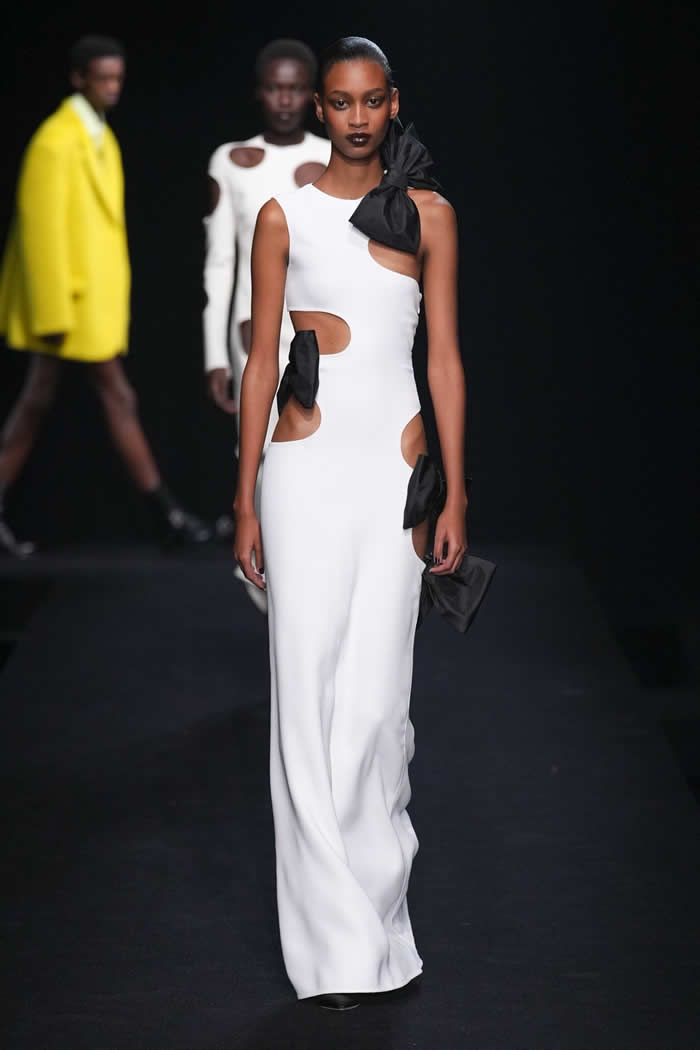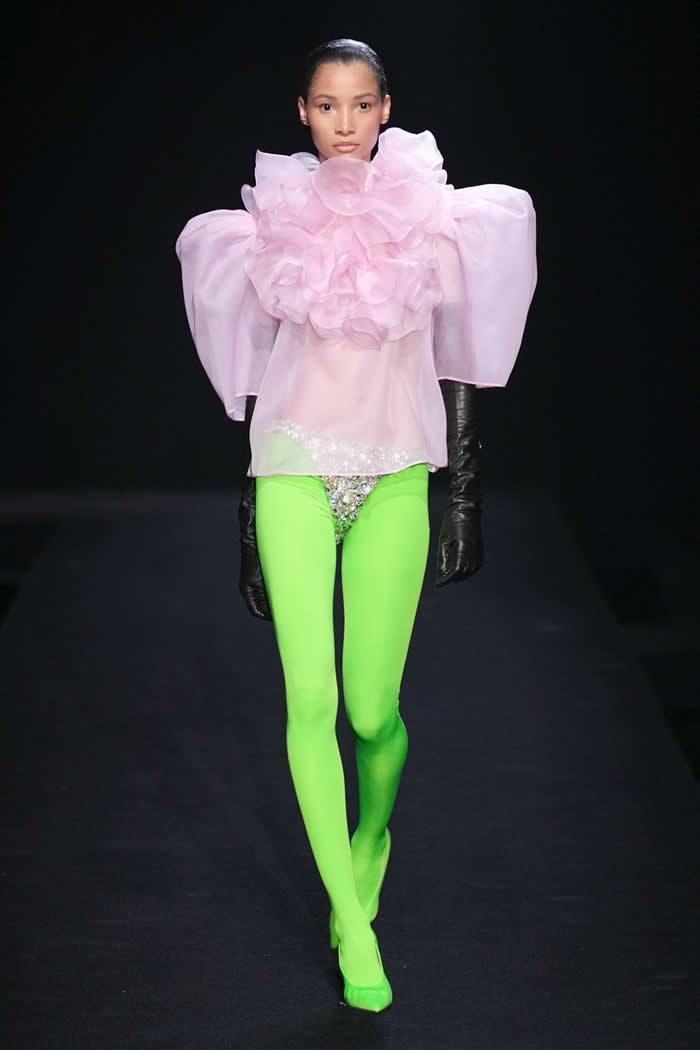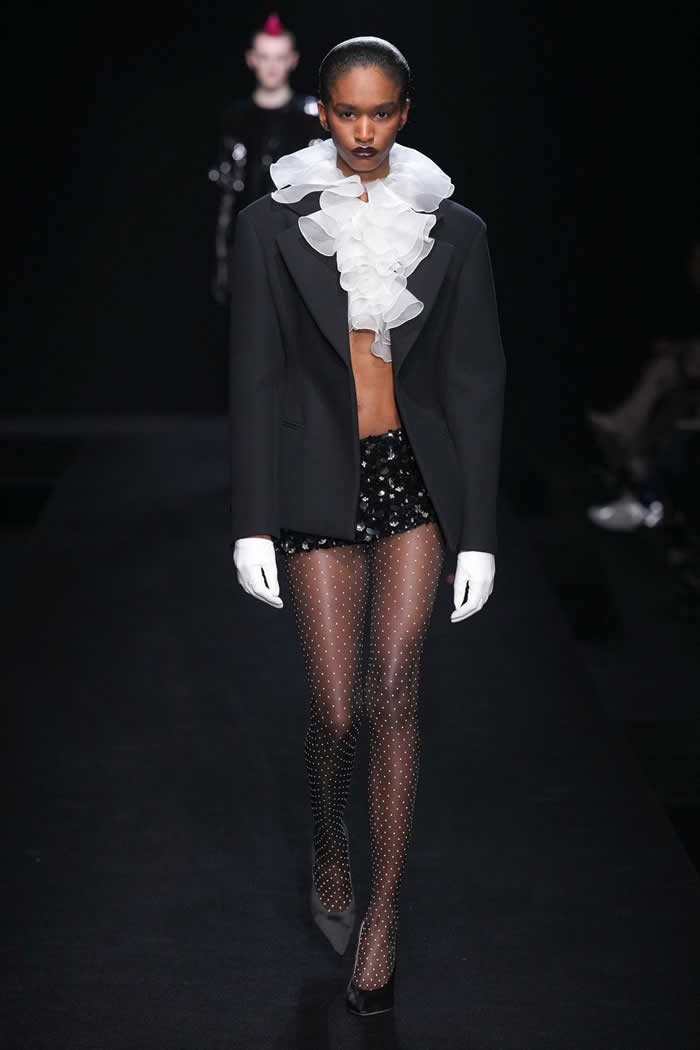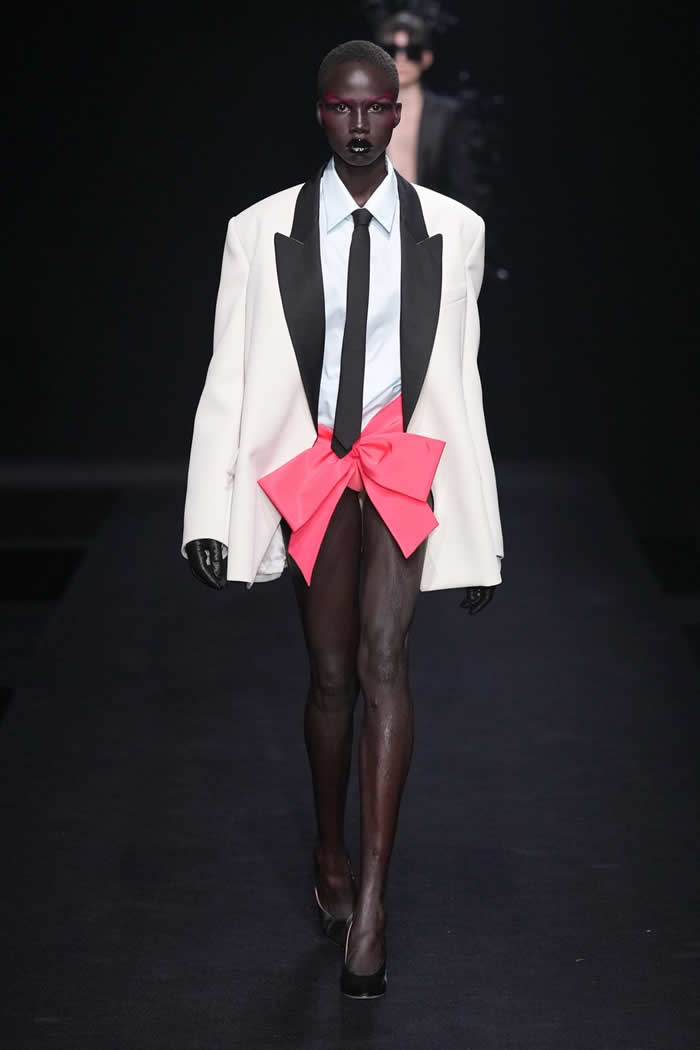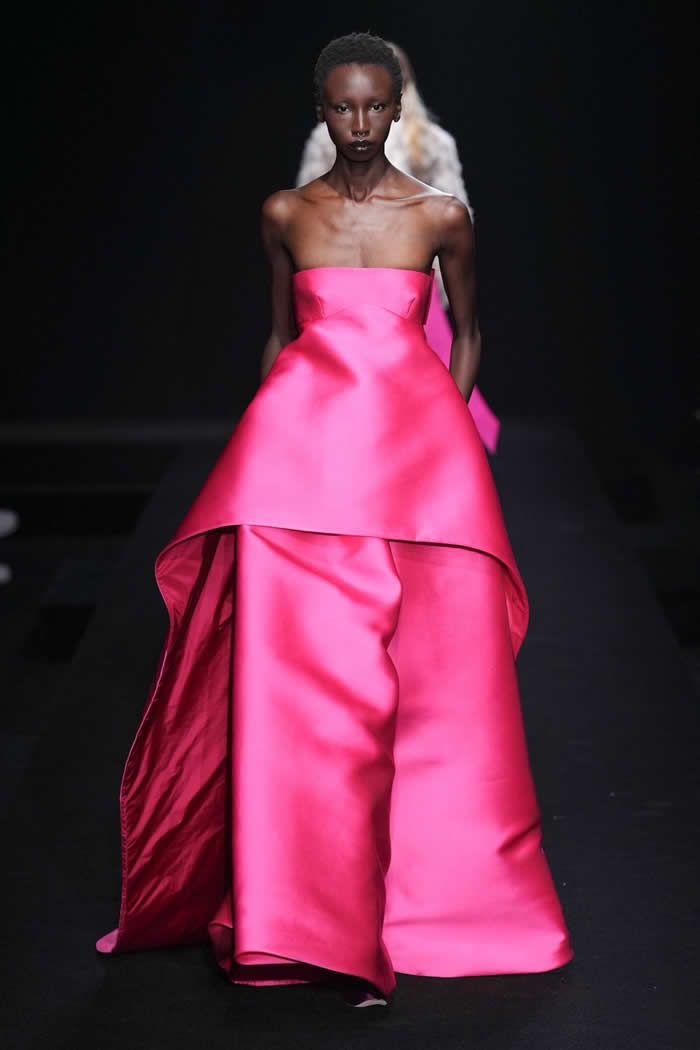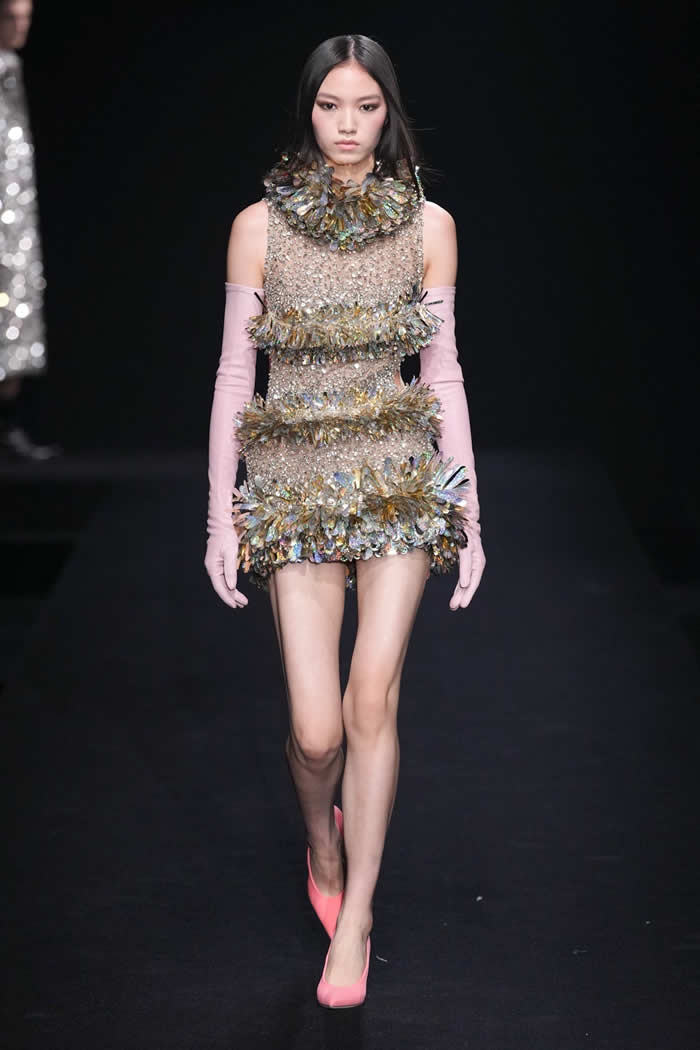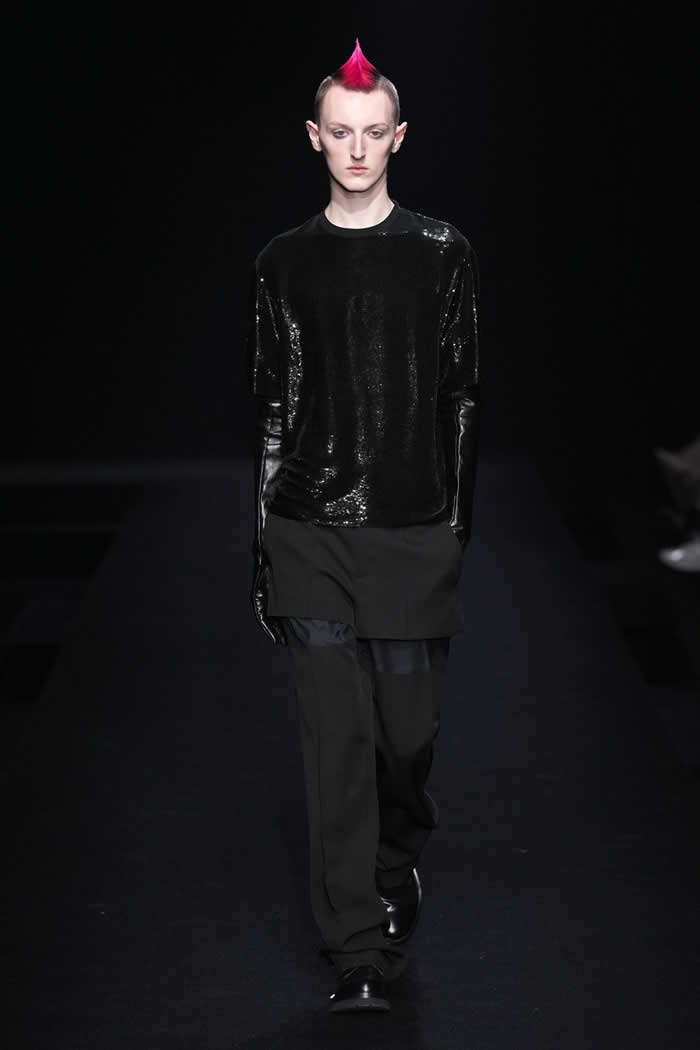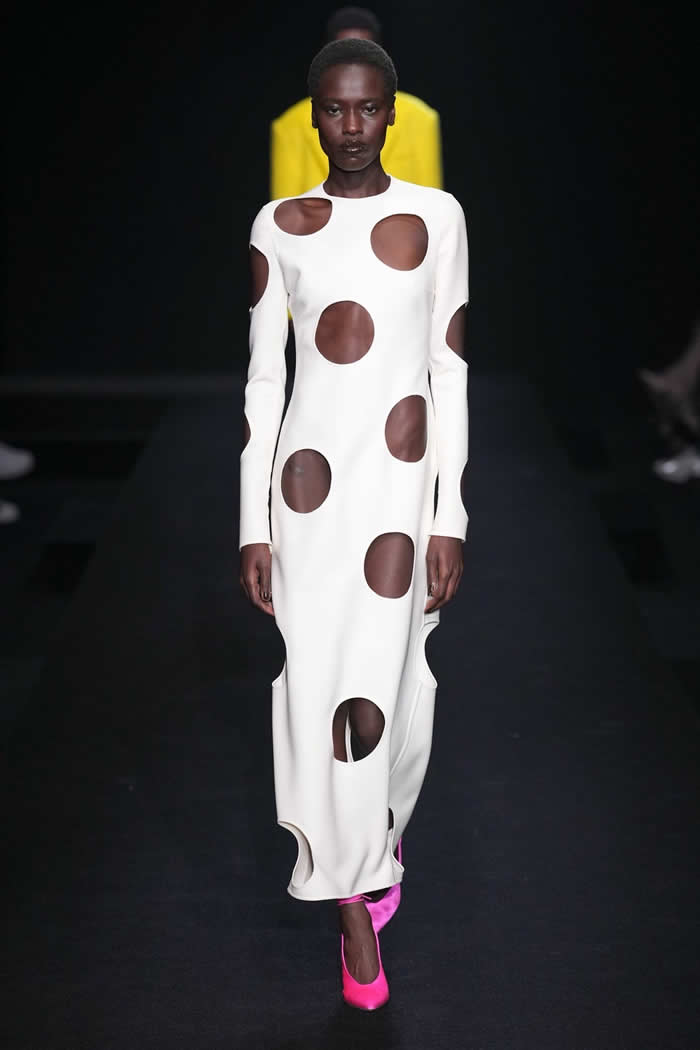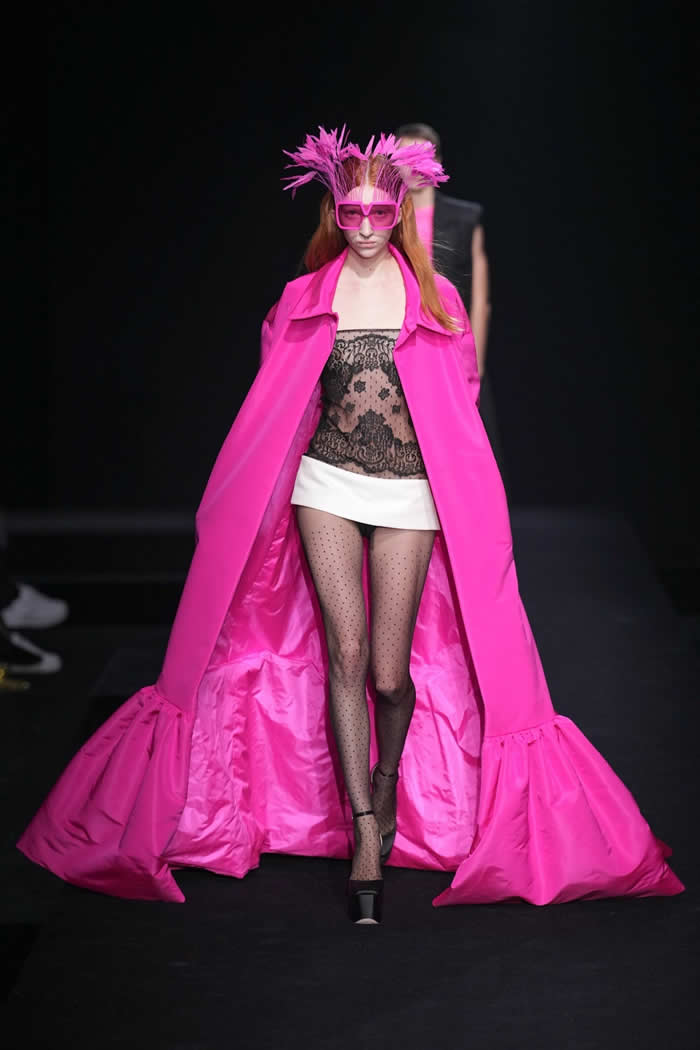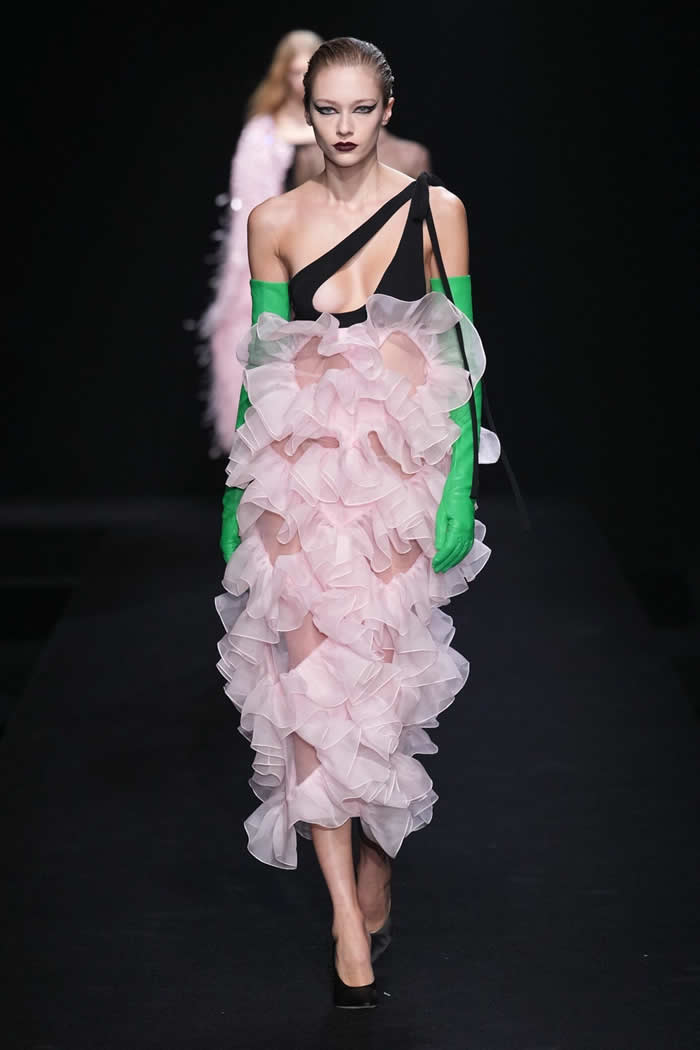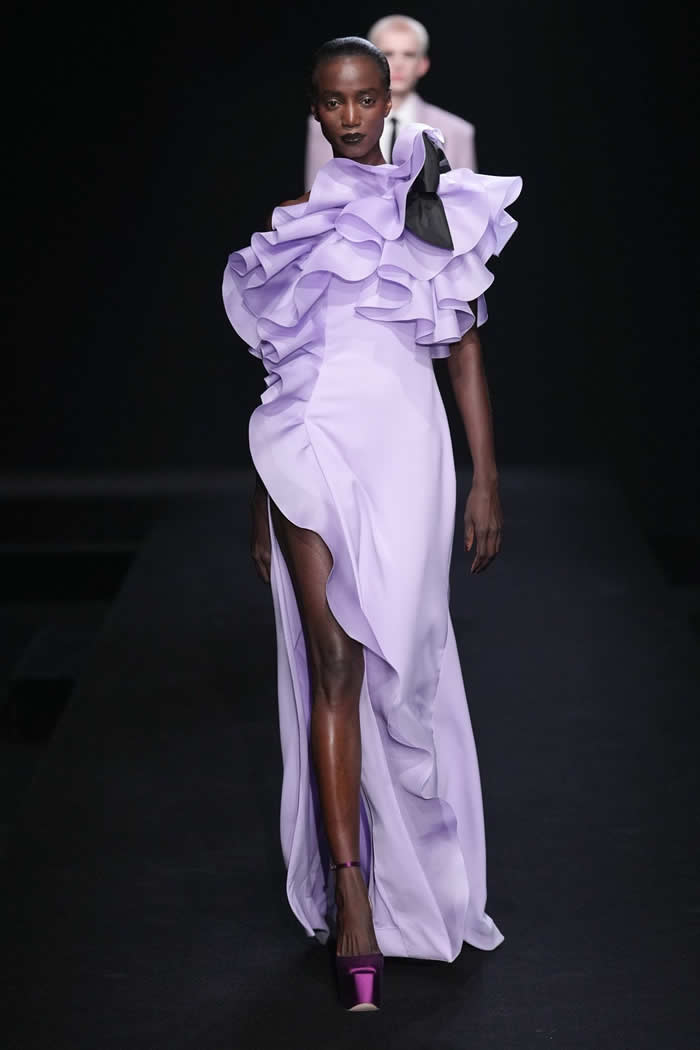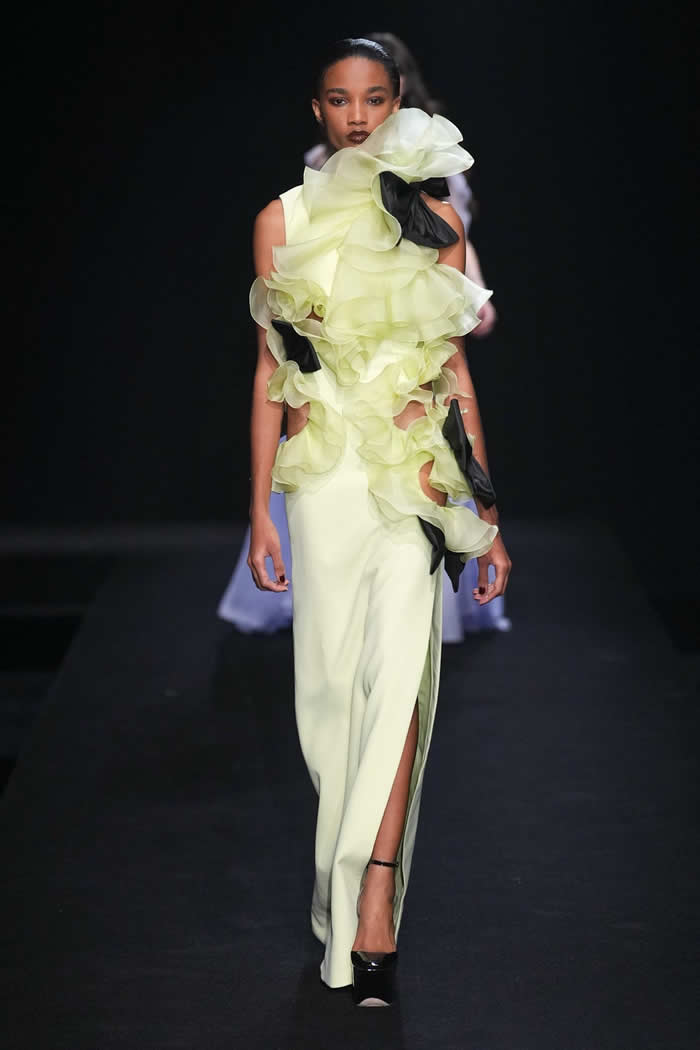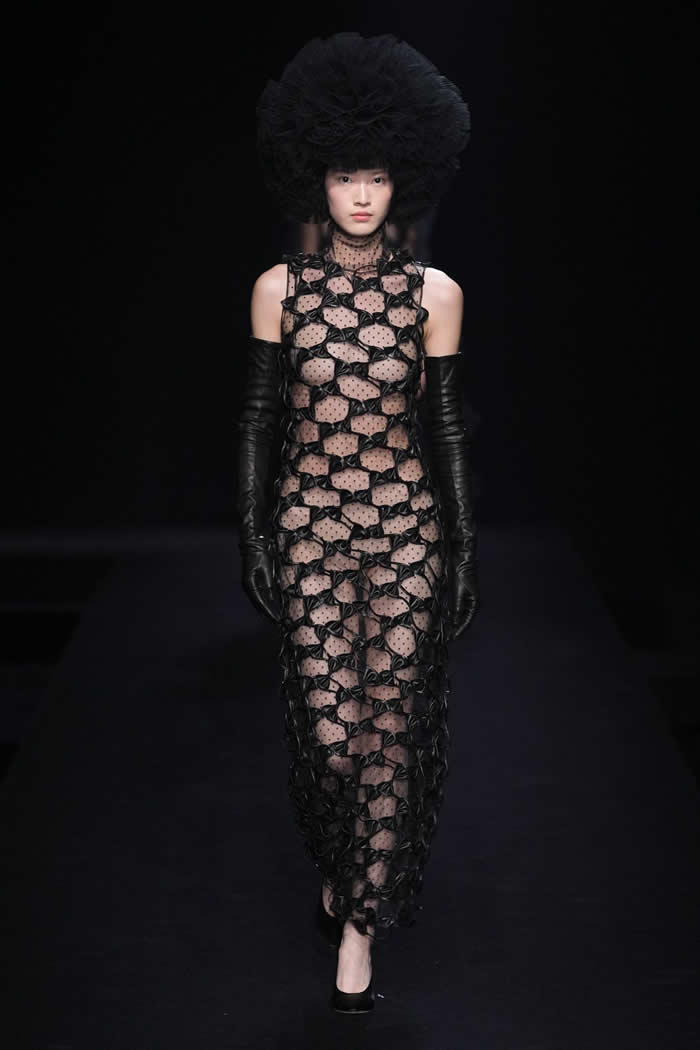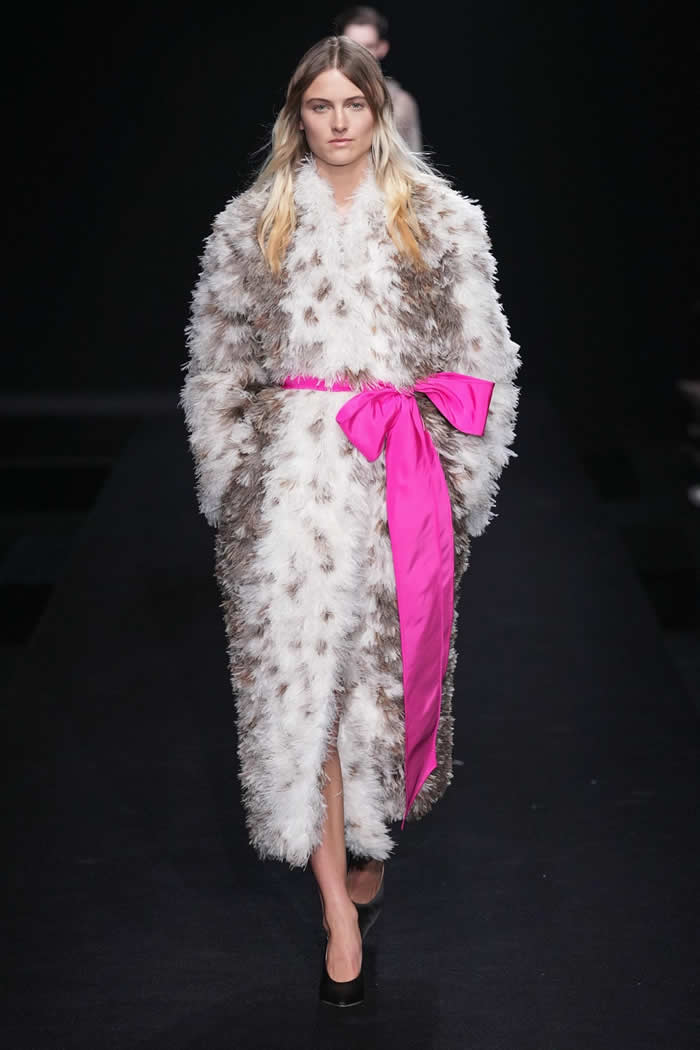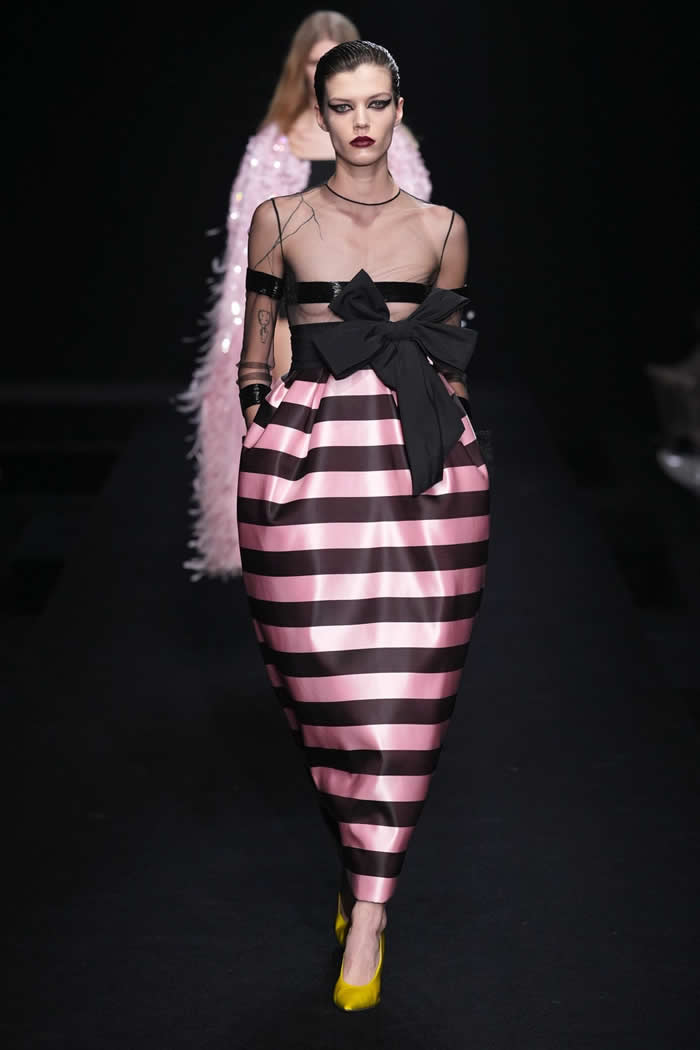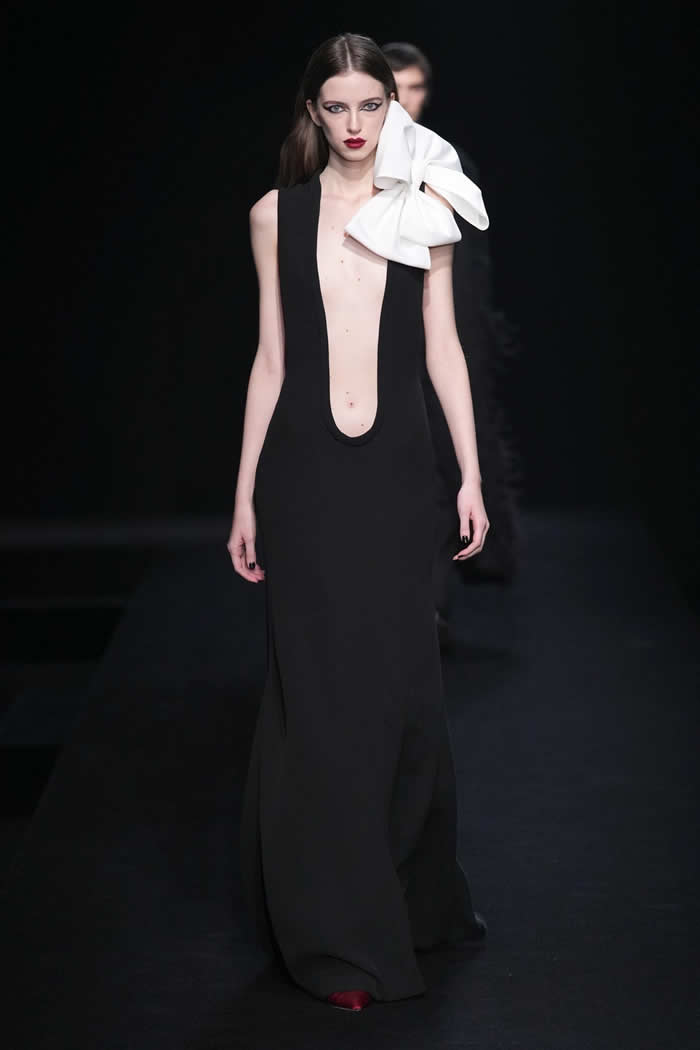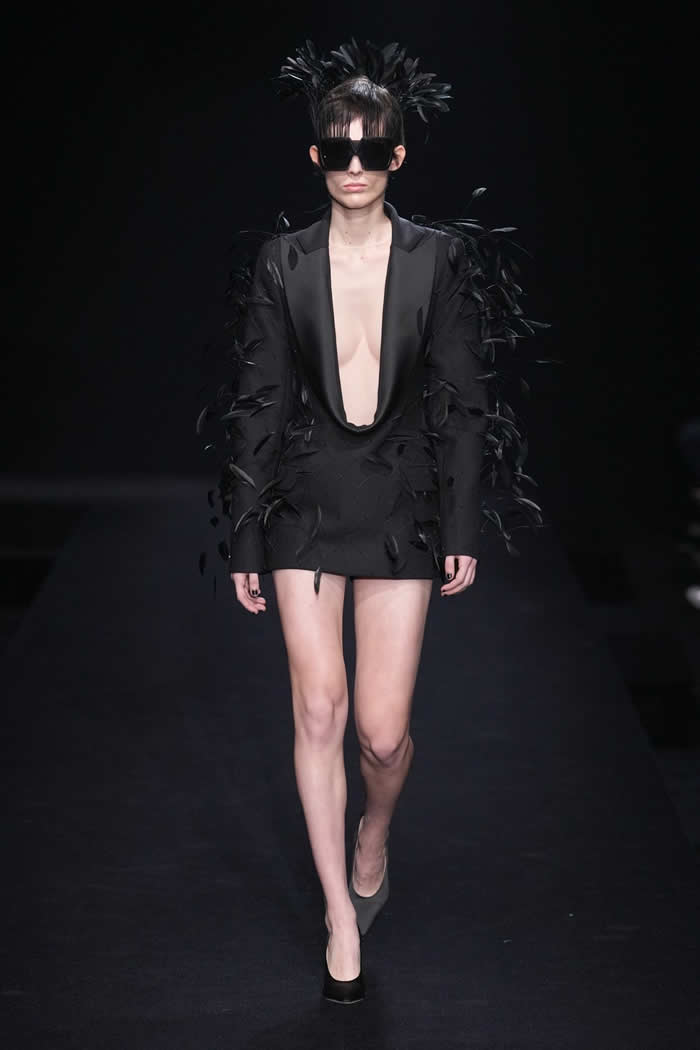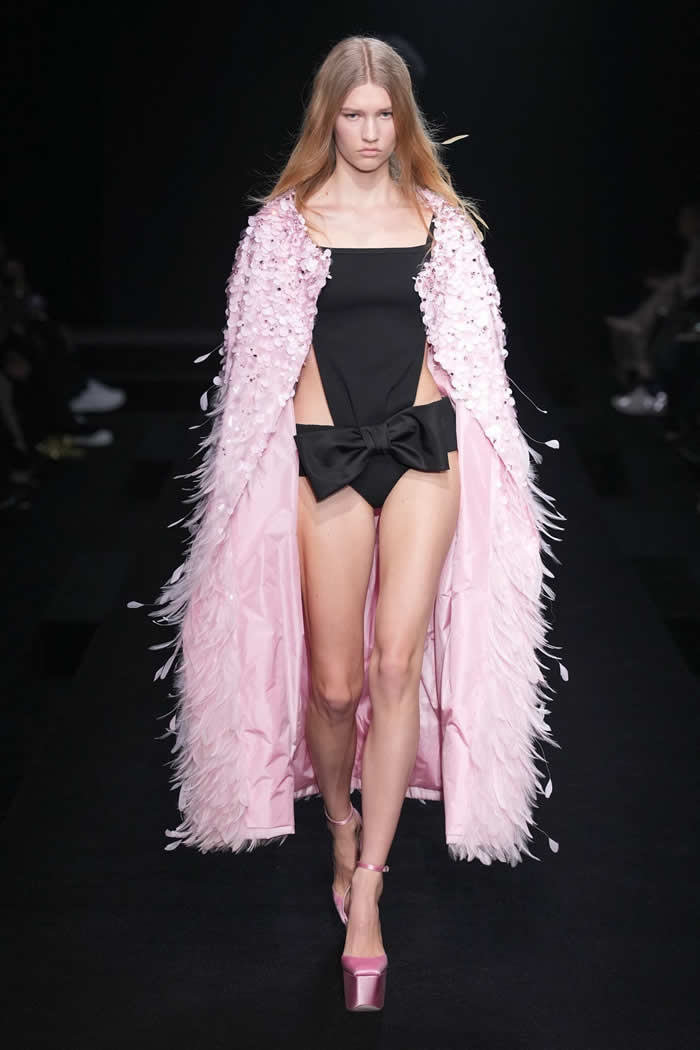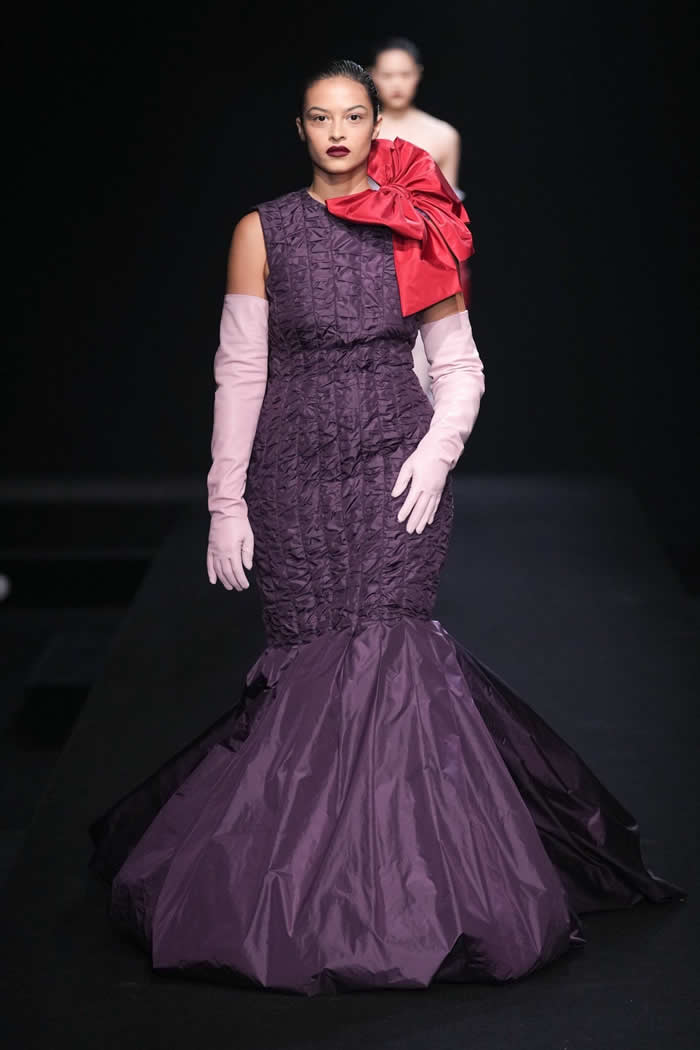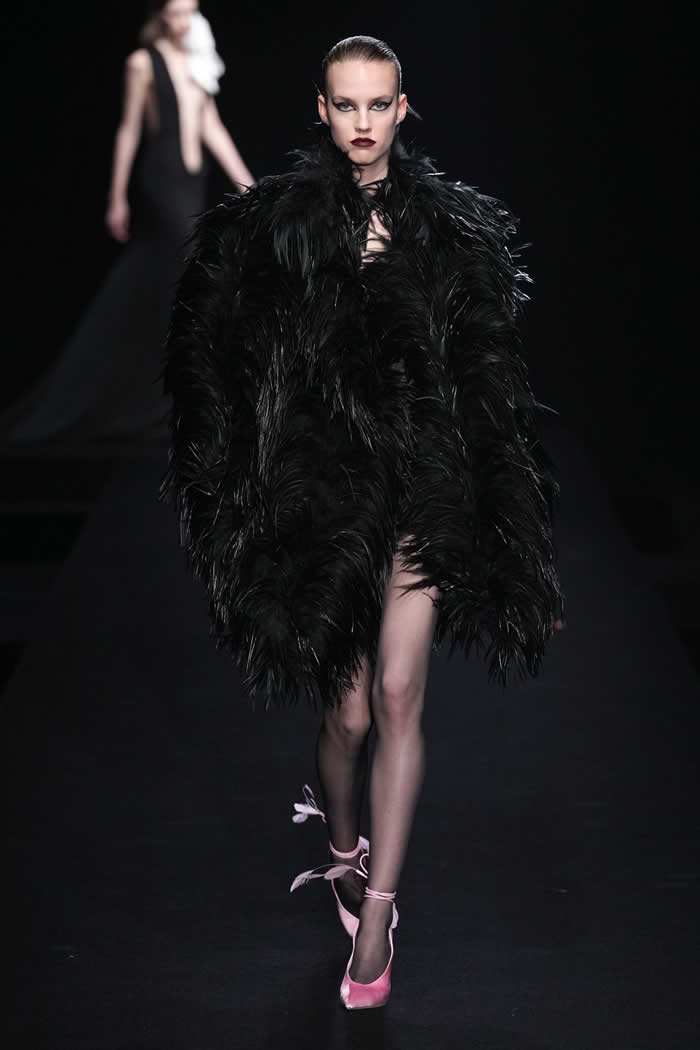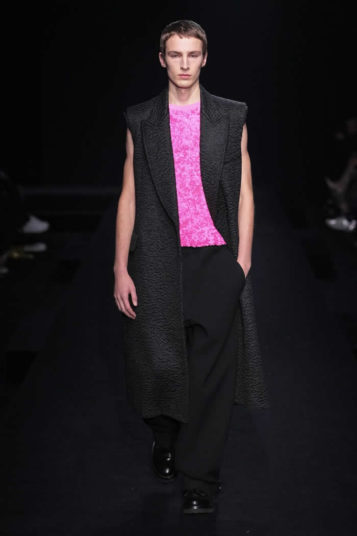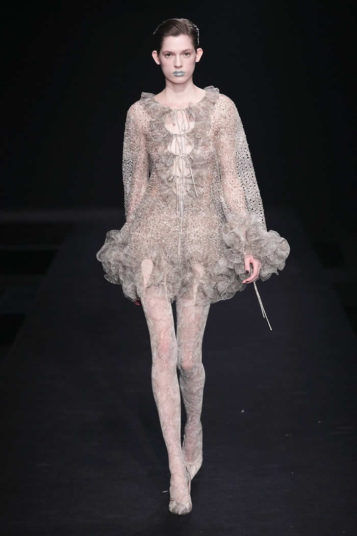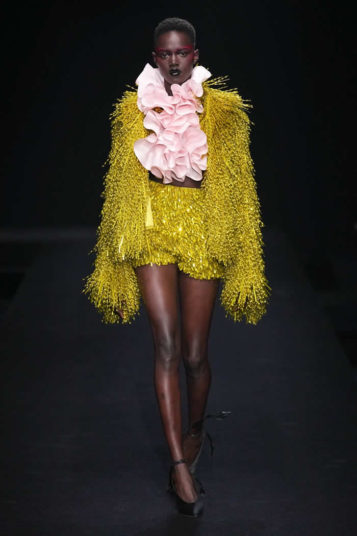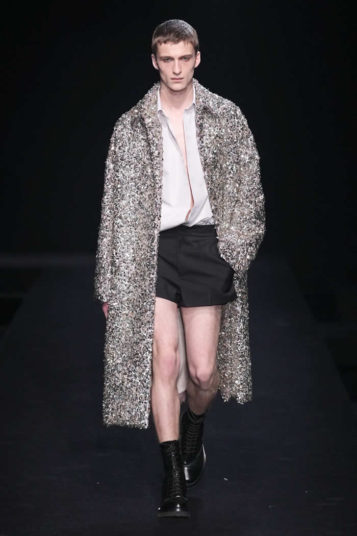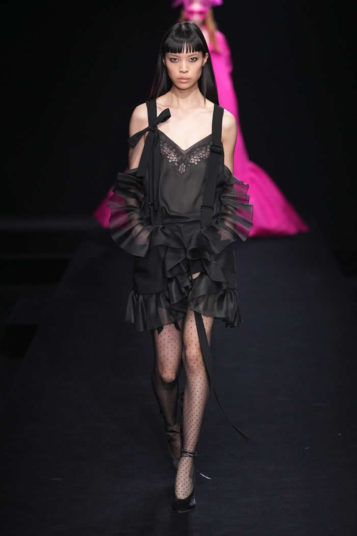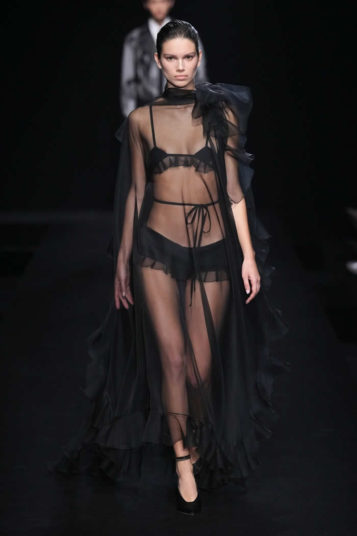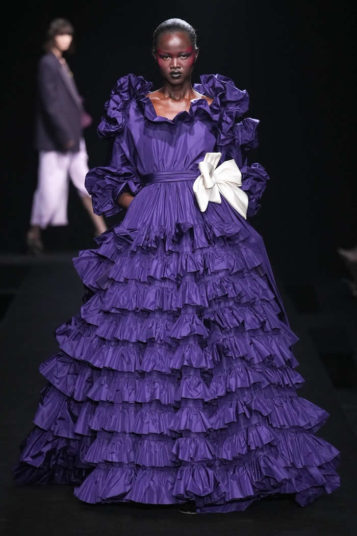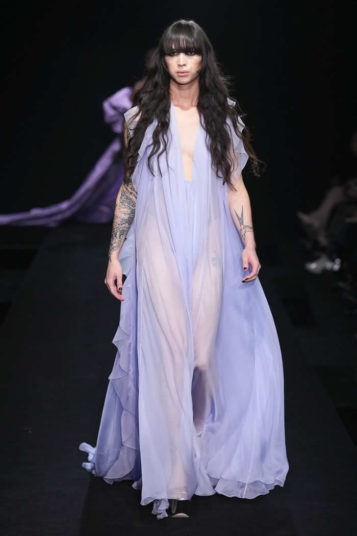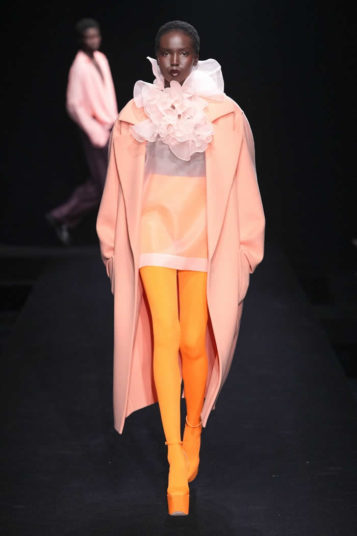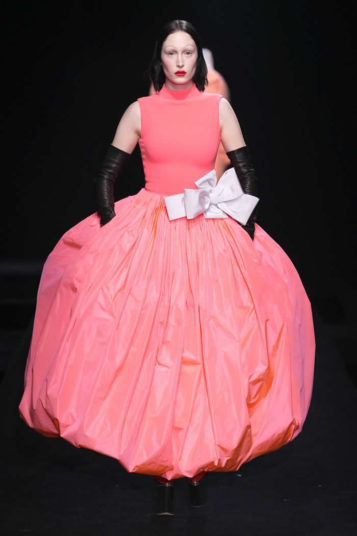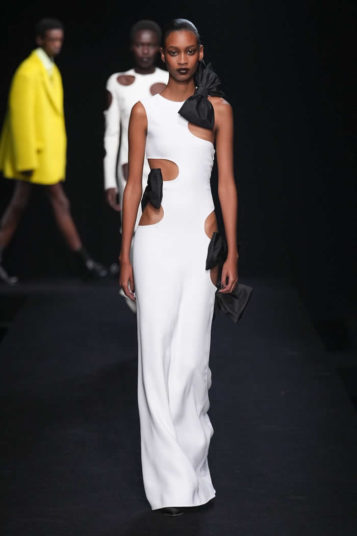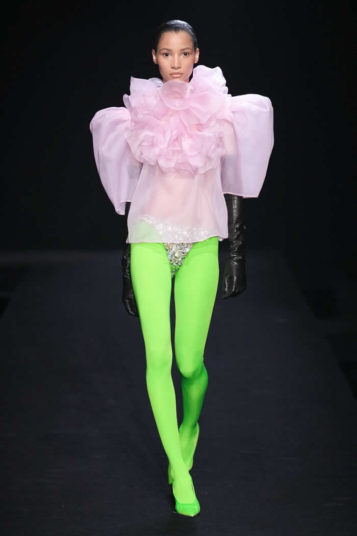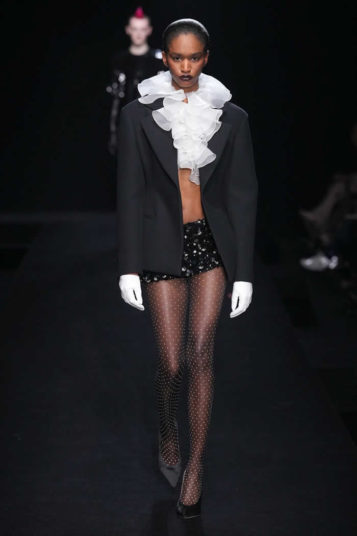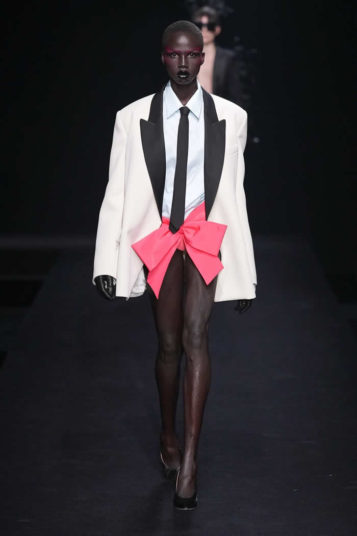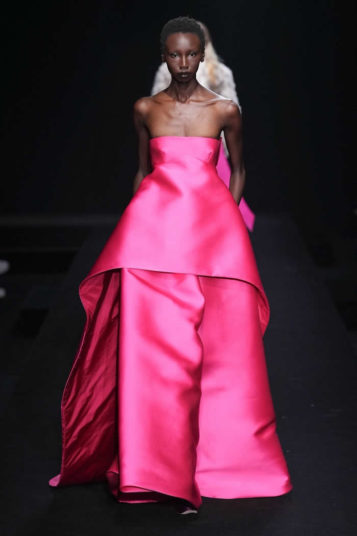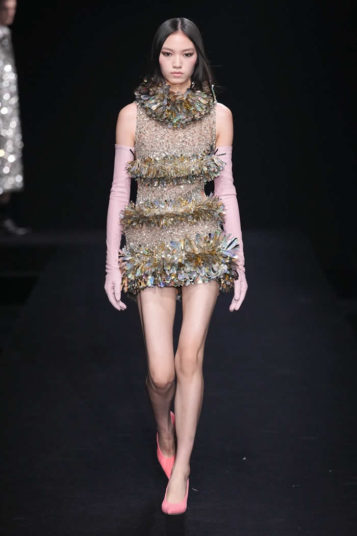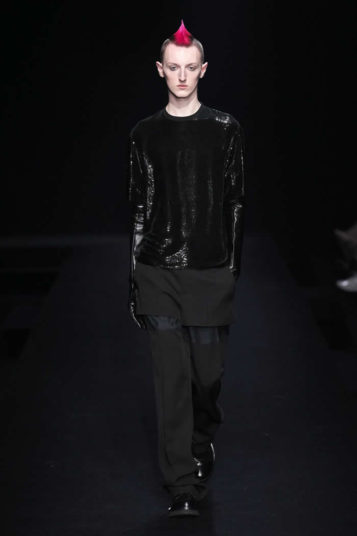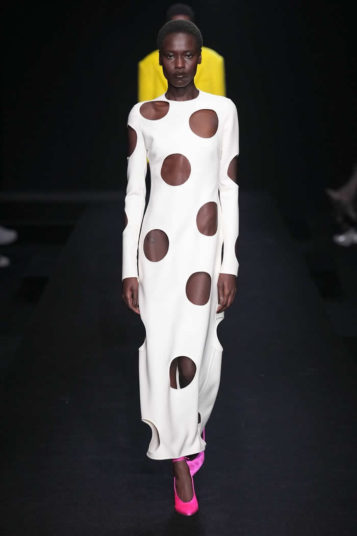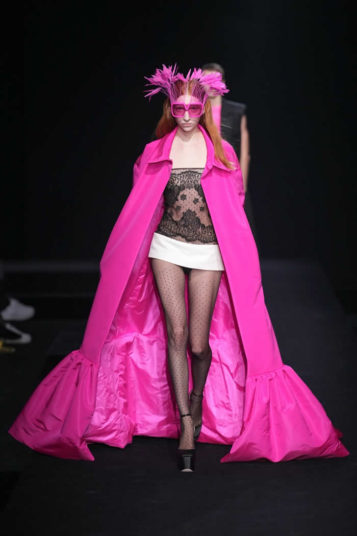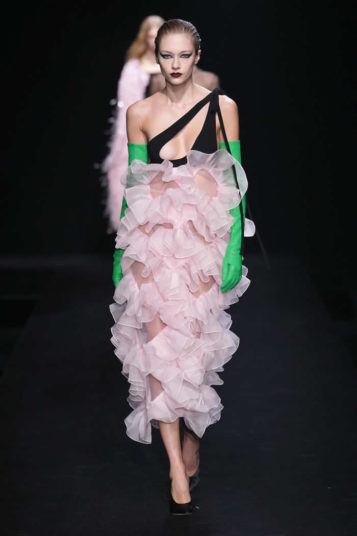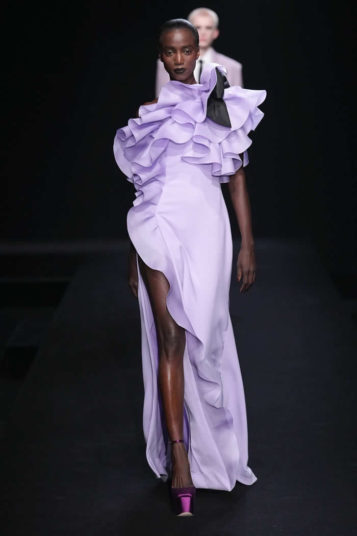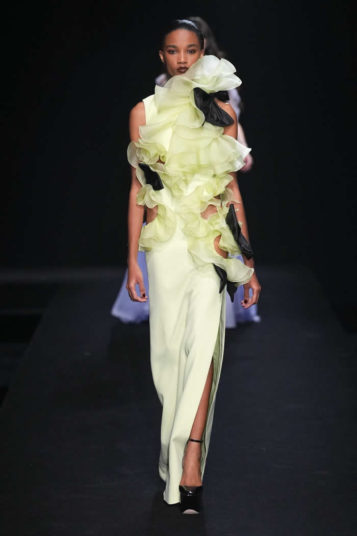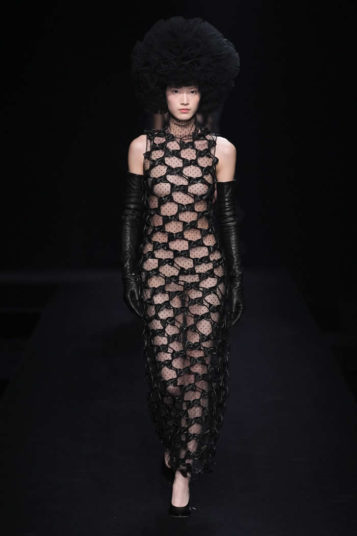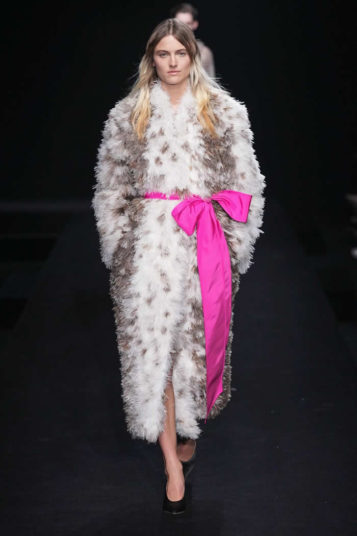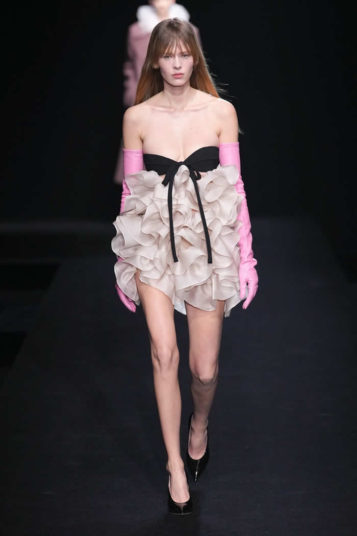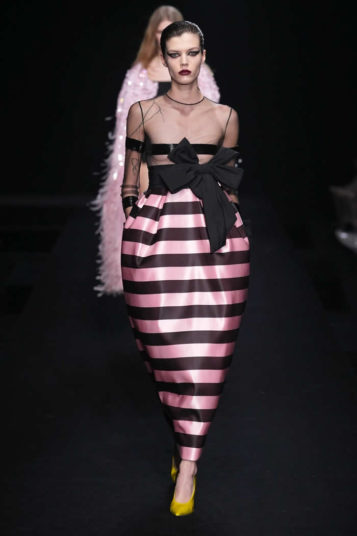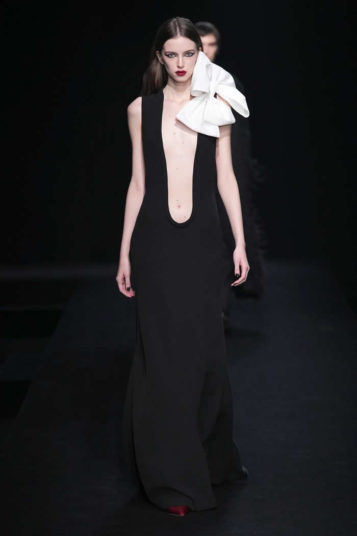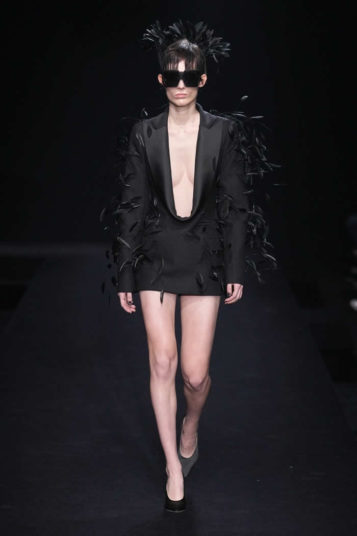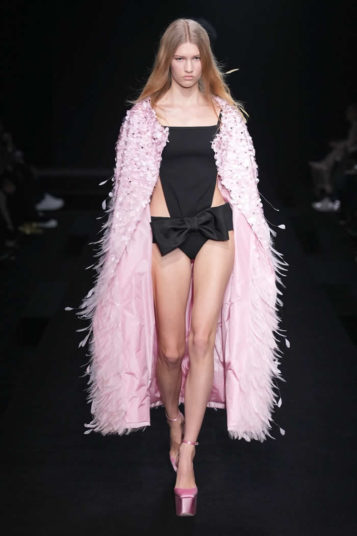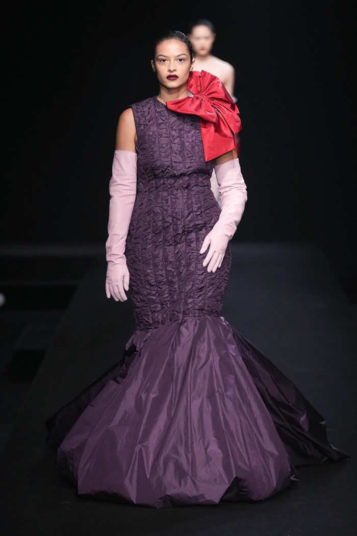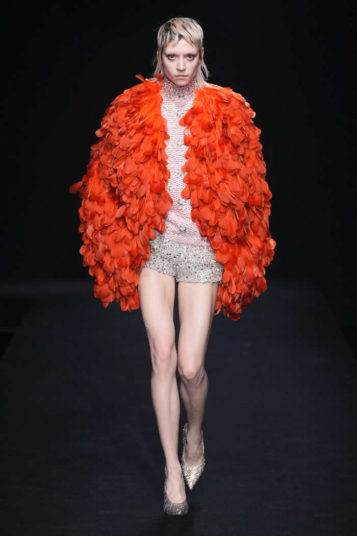A bridge too far for some who had been working at the shows, perhaps, but the crowd scene outside proved that there are thousands today who clamor to photograph and feel part of the scene around Valentino and what haute couture, and fashion in general, has to say.
His point about standing for inclusivity—his passion—is definitely intended to be heard by the wider world of young people. In a preview, he explained how he thinks the principles of one-off dressing can be relevant to them. “Of course, I love it that haute couture is about the magic of impossible challenges,” he began. “Of course, it’s about craft, and we talk about that all the time, but I also love it when couture feels effortless.
It’s all about the feeling of having something for yourself. It’s kind of democratic in a way, in the idea of showing this freedom of being whoever you want to be.” On his inspiration board were photos of clubs in the 1980s, ranging from Studio 54 to London’s New Romantic Blitz Club, the Club For Heroes one-nighter, and the Taboo, hosted by the outrageous performance artist Leigh Bowery.
What all these scenes, underground or jet-set, had in common was that they were hotbeds for generating fashion and havens for what used to be called ‘gender-bending.’ “The difference was that then, it was behind closed doors. Now it’s something we have for life. It’s today’s way of freedom,” he argued. “So I love the idea of a club, but it’s a club for today. Thinking of inclusivity as welcoming people for who they are, and who they want to be. So it’s an invitation to be free to be what you want to be, mixed with the codes of Mr. Valentino in the ’80s.”
Still, haute couture formalities were observed in a way—Valentino’s creatures of the night weren’t presented as a wild crowd of dancers, but as models walking on a runway, haute couture standards of solemnity preserved. What emerged from the darkness were pops of color (Valentino’s vastly popular Pink PP, claiming the night in ballgowns, coats, lycra tights), dark Parisian sexy black transparent lingerie dresses, and many varieties of strategic body exposure.
In 89 looks, Piccioli put forward individualism in tiny pelmet skirts or cutaway bodysuits implanted with giant bows worn with floor-trailing capes, a dress with cutout polkadot portholes, and white shirts and ties styled with micro-minis (one with dramatic red sequin trench). Inter-gender inclusivity means that men’s suiting has taken up its own space in haute couture—they came in vibrant emerald green, yellow, and electric blue; some with coats bristling with metallic beaded embroidery.
Beauty, he seemed to be saying, can be chosen, styled, and invented any which way with clothes. Strangely enough, it was the homages to Valentino Garavani’s classic draped ’80s couture gorgeousness that drew the eye most—giant ruffles in lavender or white frothing up around the face and over one shoulder, big fat bows placed on hips.
Only when it passed did you see how Piccioli had subverted the canon so that the white flounce garlanding the front of a stately white finale dress had left half of the torso naked. Will Valentino’s bare breasts soon be worn in clubs and on red carpets? Even today, that seems a risky proposition. We’ll see who’s ready to push it with Piccioli.
